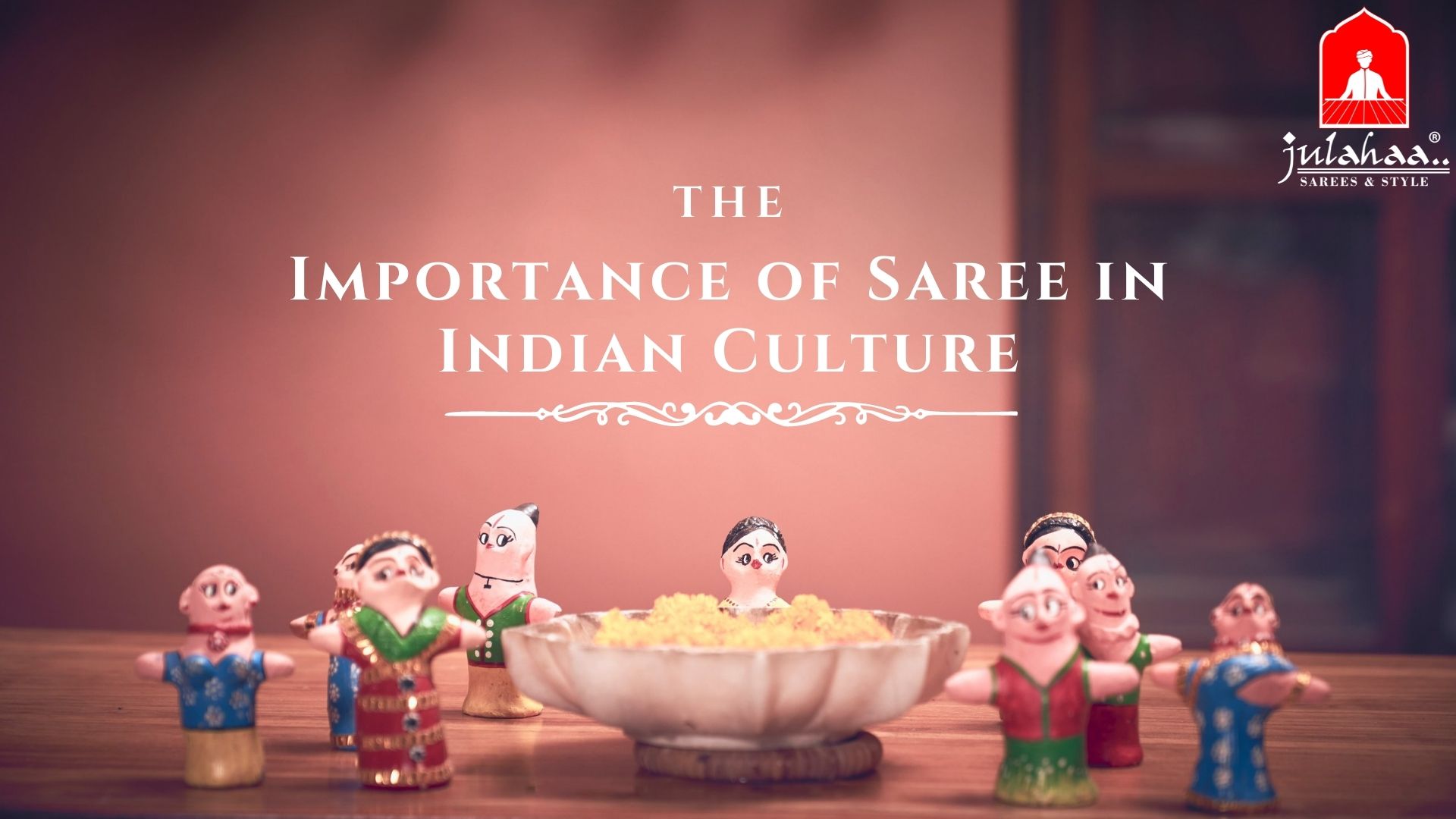Importance of Saree in Indian Culture | Julahaa Sarees
Sarees, a legendary attire of the Hindu tradition, embraces a diverse range of people from different cultures, traditions, and ethnicities across India. The lifestyle of the Indian natives may differ from one another but the saree is one such garment whose importance in Indian culture unites all those who are privy to its magnificence.
In a country like India, where a variety of traditions and cultures exists, the ethnic clothing differs from one culture to another too, and yet, the country’s populace drapes the saree, the only article of common clothing, in their own styles & culture.
In this blog, we will discover the importance of saree in Indian culture.
History Of Sarees
Considered as one of the oldest forms of attire across the world, the history of saree dates back to the time of Mahabharata & Ramayana with some records even tracing it back to Indus Valley Civilization.
‘Saree’, where the word has derived from?
The origin of the word ‘saree’ is not accurately known but what is known is that it could be derived from the Prakrit word “SATTIKA” mentioned in the Buddhist literature. The word ‘saree’ could have also been called ‘SATI’ that was converted into ‘Saree’ with change in time.
Importance of Saree in Indian Culture
1. In religious texts, there are virtues in wearing a saree, like:
- Modesty
- Humility
- Increase in self-confidence
- Development of an attitude of a warrior
- Increase in conscious mind’s stability and concentration of the subconscious mind
- Increase in awareness of one’s true form
These virtues possibly helped conserve and nurture the Hindu culture, of which Saree is a big part.
2. Prominent cultural figures insists that upon wearing a saree, an individual invokes spiritual purity and divine consciousness. Pls, note that the environment in which the saree is worn must be also equally habitable for such invocation to occur.
3. Intentional draping of a saree enables a person to absorb higher awareness and divinity of the environment. Moreover, sarees made from natural fibres have a greater ability to absorb the previously stated spiritual qualities
4. A saree is a ‘sattvic’ attire. A ‘sattvic’ or moral attire creates a positive effect on the energy centres in our body. As a result, we experience spiritual healing that leaves a positive impression on the mind
5. Dhoti was the preferred ethnic garment for men of ancient times. The folds and pleats of the garment could channel the spiritual energy of the body as well of the Universe more efficiently than garments worn today i.e. jeans, t-shirts, etc.
Conclusion:
The saree has more history attached to it than we give it credit for. This blog proves that not only saree was used for reclaiming the Hindu culture but to preserve and pass on the spiritual wisdom that is attached to the saree.
Love wearing a saree?
Check out Julahaa Sarees at www.julahaa.com and experience ethnic wear from a whole new level! #MySareeMyWay
Follow us on Facebook & Instagram!
Got queries? Feel free to share your thoughts with us by using the comment box below.
